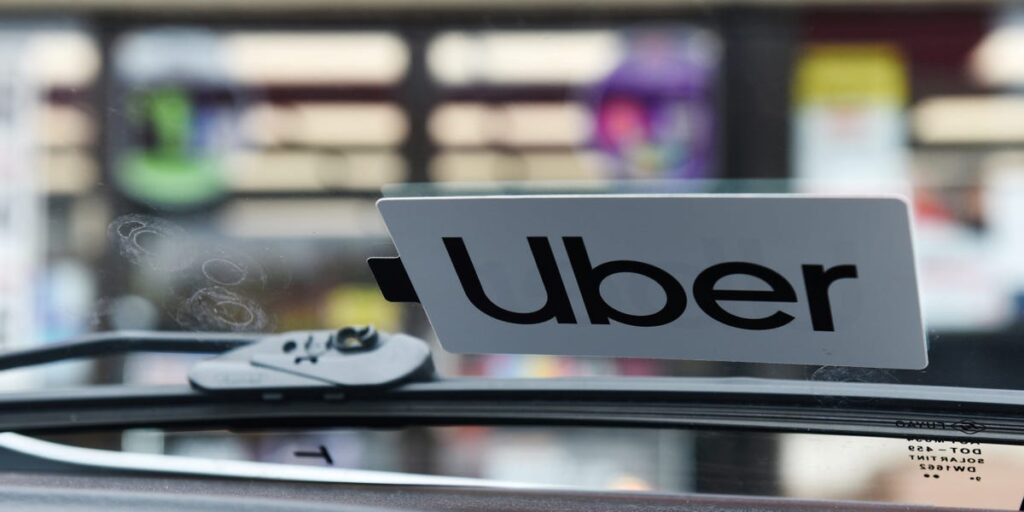Uber is letting more riders pay for trips with good old greenbacks. Some drivers told Business Insider they’re worried that it will make their jobs harder.
The ride-hailing service has expanded an option to pay for rides in cash to “dozens more cities” over the past few weeks, up from five where it introduced cash rides earlier this year, an Uber spokesperson told Business Insider. Cash payments are now available in major cities, including Los Angeles, San Diego, Tampa, and Jacksonville, Florida, as well as some smaller ones, such as Laredo, Texas.
With the new feature, customers can request a ride through the Uber app and pay their driver in cash when they reach their destination. Uber said the old-school approach opens its service to people without bank accounts, credit cards, or other forms of electronic payment.
As with any other Uber ride, drivers don’t have to take cash rides offered on the app, an Uber spokesperson said. They can also opt out of receiving cash ride offers altogether.
Three Uber drivers who spoke with Business Insider said that they see value in offering rides to underbanked passengers. Still, handling cash takes extra steps — and potentially risks their safety.
Roxie Benesch said that she has had a couple of passengers pay in cash this year while driving around San Antonio. One told her she paid with cash because she didn’t have money in her bank account, Benesch said.
While serving underbanked riders is a good goal, Benesch said, dealing in cash makes her feel less safe as a driver. As a woman who often drives at night, Benesch said it “would be scary” if a rider knew she had cash on her.
“I think it’s worthwhile to do it, but I can understand there’s going to be problems,” she said of Uber’s cash payment option.
On a Reddit page for Uber drivers, some posters wrote that they saw risks from accepting cash on rides. One commenter in March questioned whether it was a good idea from an accountability or safety perspective.
Sergio Avedian, an Uber driver and senior contributor to the Rideshare Guy, a gig driver advocacy blog and YouTube channel, said he was concerned that drivers who accumulate lots of cash could become targets for criminals. He pointed to news reports about cab drivers in areas such as New York City being targeted in robberies.
If the feature becomes widespread enough, he worries Uber drivers could experience similar violence, even if they don’t take cash rides.
“Now, we have a target on our head,” Avedian said.
Uber added new features to handle change ad collect fees
Uber first said it would offer the option for riders to pay in cash in March — an initial rollout included Cincinnati and San Antonio, among other cities. The option is still in its pilot phase, the Uber spokesperson told Business Insider.
“We believe transportation should open doors for everyone,” the spokesperson said. “Yet the truth is, not everyone has access to a bank account or credit card—and some riders simply prefer paying with cash.”
Safety is “a top priority,” the spokesperson also said. To request cash trips, riders need to verify their identities through a process including cross-checks with third-party databases and, potentially, uploading a government-issued ID. Drivers also have to have a record of good feedback to accept trips paying in cash.
In March, Uber gave drivers guidelines for cash rides, including that drivers should “never argue over payment” with riders and regularly deposit the cash they accumulate.
Uber grew from a startup to one of Silicon Valley’s biggest success stories using a cashless model for its ride-hailing business. Every transaction, from paying drivers to collecting riders’ tips, typically happens electronically.
In some countries, Uber riders have had the option to pay in cash for years. Uber started allowing cash payments in Brazil in 2016. The decision helped the service grow, but a Reuters analysis of crime data in 2017 showed a spike in robberies involving Uber drivers in São Paulo during the first few months after Uber introduced the cash pay option there.
In the US, making cash payments requires some new features in the app, the company said.
One issue is providing change: If riders don’t have the exact amount in cash on hand and the driver can’t give them the difference, Uber will issue them a credit for their next ride.
Then, there’s the matter of getting Uber its cut of each rider’s fare — another process that typically happens automatically. Uber allows drivers to keep the cash that riders use to pay. Then, the company takes its share by debiting the driver’s account against future earnings.
Matt Kartal, who has driven for Uber in Cincinnati for nine years, said that he has taken several cash rides since March. Most have been smooth, he said, though one passenger got out of his car without paying. Some of the paying riders have been restaurant employees who are spending their cash tips from work, he said.
Kartal said he makes sure to use Uber’s recording feature when he sees the cash-payment icon in the app. He said that he confirms with riders on the recording that they know they’ll be paying in cash and repeats the amount they owe at the end of the ride in case there is any dispute later.
Kartal sees an opportunity for customers to manipulate the system — similar to what some ride-hailing and food delivery customers do with fraudulent refunds — and said he hopes that it doesn’t become a problem with Uber’s cash payment option.
“I’m sure that’s going to happen, and I’m hopeful that Uber takes the proper steps with those particular rides,” he said.
Do you have a story to share about ride-hailing or the gig economy? Contact this reporter at abitter@businessinsider.com or 808-854-4501.
Read the full article here


